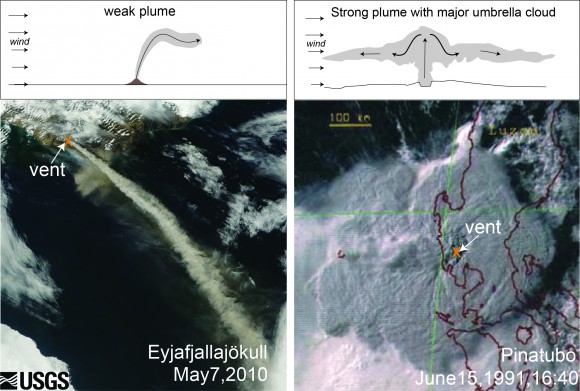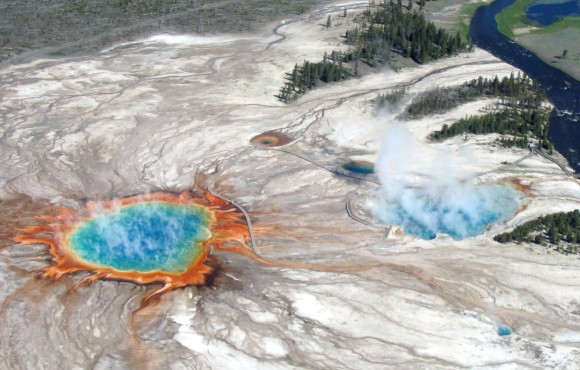
Despite the high interest in it, scientists say it’s not likely a supervolcano will erupt at Yellowstone National Park anytime in the near future. And, if one did, the effects of the eruption would vary depending on the strength of the eruption, wind conditions at the time, and other factors. Still, according to a new study by the U.S. Geological Survey, a month-long Yellowstone supereruption would blanket the northern Rocky Mountains in “meters of ash.” Meanwhile, cities as far away as New York City, Los Angeles and Miami would receive their own fine dusting of millimeters of ash. In other words, a Yellowstone supervolcano would cover North America with ash, from sea to sea.
The researchers said in a press release:
A giant underground reservoir of hot and partly molten rock feeds the volcano at Yellowstone National Park. It has produced three huge eruptions about 2.1 million, 1.3 million and 640,000 years ago. Geological activity at Yellowstone shows no signs that volcanic eruptions, large or small, will occur in the near future. The most recent volcanic activity at Yellowstone — a relatively non-explosive lava flow at the Pitchstone Plateau in the southern section of the park — occurred 70,000 years ago.
These researchers say their improved computer model – whose outcomes are published in the journal Geochemistry, Geophysics, Geosystems – shows that a hypothetical, supereruption at Yellowstone would create a distinctive kind of ash cloud known as an umbrella.
As its name implies, this cloud would expand evenly in all directions, sending ash across North America. Ash distribution will vary depending on cloud height, eruption duration, diameter of volcanic particles in the cloud, and wind conditions, according to the new study.

A supereruption is extremely unlikely, the study notes. However, if one occurred, it could shut down electronic communications and air travel throughout the continent, and alter the climate.
Researchers at the U.S. Geological Survey used a hypothetical Yellowstone supereruption as a case study to run their new model that calculates ash distribution for eruptions of all sizes. The model, called Ash3D, incorporates data on historical wind patterns to calculate the thickness of ash fall for a supereruption like the one that occurred at Yellowstone 640,000 years ago.
The new study provides the first quantitative estimates of the thickness and distribution of ash in cities around the U.S. if the Yellowstone volcanic system were to experience this type of huge, yet unlikely, eruption.
Read more at the American Geophysical Union website

Bottom line: If the Yellowstone supervolcano were to erupt – an unlikely scenario, scientists say – cities close to volcano could be covered by more than a meter (a few feet) of ash. There would be centimeters (a few inches) of ash in the Midwest, while cities on both coasts would see millimeters (a fraction of an inch) of accumulation, according to the new study that was published online on August 27, 2014 in Geochemistry, Geophysics, Geosystems, a journal of the American Geophysical Union. The paper has been made available at no charge via onlinelibrary.wiley.com.











